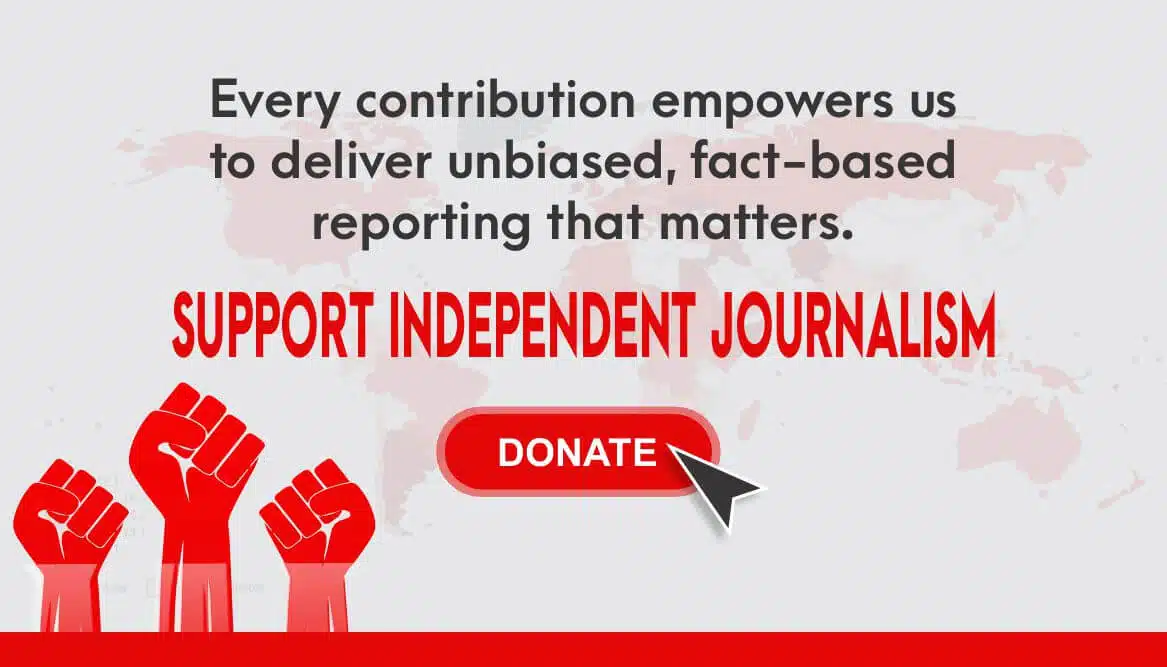James Eze, dispossessed ( Fasihi, 2019), 121 pp.
James Eze, former Literary Editor of the Sunday Sun (Nigeria), former banker, well-known organizer of literary events and current Chief Press Secretary to the Governor of Anambra State, Nigeria, Chief Willie Obiano, has published a much-anticipated, long-awaited collection of poetry titled “dispossessed.” Eze’s poetry has been published previously in several anthologies including Camouflage: Best of Contemporary Writing from Nigeria; Dreams at Dawn, Crossroads and Mindfire, but dispossessed is his first book of poems, providing the public an opportunity to engage him more intimately at the levels of thought, style and craft.
dispossessed is a welcome and remarkable contribution, and that Eze despite his many forays in the private and public sectors has been able to find the time and energy to put a fence around some of his works over the years is a major exercise in self-discovery and self-affirmation, if not self-definition. He himself announces this early in the collection when he tells us: “…i am the missing lobe of poetry’s kolanut/the fearless chest that absorbs the anger of razor blades/I surrender my anvil at the crossraods/and unscrew the cork on my silence”. (p.5). That missing lobe has now been found, and I can attest that it tastes strong and pleasant but Eze’s chest may well be prepared for more razor blades as that is the nature of the enterprise of breaking one’s silence and choosing to sing in the marketplace.
James Eze opens dispossessed with a series of invocations like a village griot: “petals and buds” (p. 5) where he announces his re-awakening, “I am” (pp. 6 -7) in which he introduces himself: “I am ngwu/nwa nkpozi eze/ striving for definition/a song in wind-aided fragments/my voice is the rage of a thousand broken men/the ripe boil on society’s nose” (p. 6). That “ripe boil” bursts open in the poems that follow. Eze also acknowledges the established tradition of literary imagination, living and dead poets, the immortality of whose songs and dances defines the art: “okigbo, Neruda, eliot, pound, yeats…, gabriel okara, odia ofeimun, niyi osundare.”. In “here I come”, Eze expresses some doubt: “…will there still be room for a splash in the wineglass?/will there still be space for my dessert of metaphors?/I come prepared/but the race is long/and if I’m out of breath/madiba will take the pen…” (p. 8). Every writer invariably creates a space for himself or herself at the table. Dispossessed offers enough evidence that indeed Eze comes prepared: as he himself puts it: “I was born for this moment…prophet, priest and pilgrim…to blaze my name across seven hills…wayfarer, troubadour, minstrel…” (p.9).
Dispossessed is divided into three parts: “poetry of innocence (21 poems), transgression (31 poems) and atonement” (24 poems). The title of the book is taken from Colum McCann’s epigram: “literature can make familiar the unfamiliar and the unfamiliar is very much the dispossessed.” The nature of the “unfamiliar” constitutes the substance of the third part of the collection: “atonement”; the entire book itself is a journey from innocence to sin, from the personal to the private and the public, from the poetry of feeling and psychological complexity to the poetry of defiance and protest.
What may be striking to the ordinary reader of this collection in terms of the familiar, being unfamiliar, is the poet’s use of lower cases and avoidance of period marks, although it may be said that Eze violates his own choice in this regard, with his names written in capital letters on the cover of the book, and the use of a capital “Y” letter in a poem titled “I ask for You.” (p.52). This stylistic choice is reminiscent of e e cummings (1894 -1962), the avant-garde American poet who turned experimentation with grammar and syntax, into a signature style which has inspired many younger poets, including award-winning Nigerian poet, Chijioke Amu-Nnadi, who like cummings writes poetry in lower case without punctuation – as seen in his works: the fire within (2002), pilgrim’s passage (2004), through the window of a sandcastle (2013), a river’s journey (2016) and a field of echoes (2016). Eze opts for the same stylistic mode, and like e e cummings, he pays much attention to nature and love.
Similarly, there are echoes of Ezra Pound, Pablo Neruda and T. S. Eliot in the collection, Christopher Okigbo is yet another major influence – “a fistful of kolanuts” (p. 79) is a homage to Okigbo, “idoto” (p, 22) is a familiar echo and imagery from one of the greatest poems ever written by a Nigerian, and there are at least a few other major echoes: “april is not the cruelest month” in a poem titled “april” (p. 10) – T.S. Eliot; “seven hills” in “here I am” (p. 9); “gleam of broken glass in the westering sun” in “when I was a boy” (p. 19) – J.P. Clark; “a song for the flutist” (p. 99) – Odia Ofeimun, “a song for the river nun” (p.116) – Gabriel Okara, “elegy for the weaverbird” (p.104) – Christopher Okigbo. Nonetheless what we hear is James Eze’s unmistakable voice. He writes in a metrical style, that is marked with clarity, depth and wit, and variations in poetic structure.
In the first two parts of the collection, the poet composes his lines in regular patterns relying heavily on repetition and imageries to convey the effect of dramatic speech. But in the third part titled “atonement”, to which we are introduced with a reminder of “blood for blood”, the poet’s prosody undergoes a rhythmic and tonal shift. The personal tone in the first part and the romanticism of the second recedes to the background as the poet resorts to critical judgment and rationality. The persona in “Atonement” is that of the poet as a man of action and protest, his tone becomes political, and the imageries assume a darker tint. The structure changes too as the poet resorts to regulated stress, greater disturbance in the rhythm and resort to counterpoint and rhetorical metres.
After the homage paid to Christopher Okigbo in “a fistful of kolanuts” (p. 79), Eze signals a change of tone in “the poets’ republic”, and for the rest of the collection, he subjects history, politics, culture, national and international, past and present to a searing and fearless interrogation. A frontal subject here is Biafra: In “biafra”, (pp. 82 -84): we are offered a feel of what to expect when Eze writes: “…for jail cells might limit our movements/but no prison wall is high enough to restrain a dream/Biafra/thunderous footfalls and rumble of nzogbu nzogbu on the streets/announce a blue moon of worries/Biafra/and soon the sleeping world will wake up to accept/that a thousand chains may hold our hands and feet/but there’s no dungeon for human thoughts/biafra/the tree of liberty must sink its roots/in defiance to the acid soil of repression/Biafra/for when bombs and bullets go deaf/words become knife edges in the ear of pharaoh” (pp. 83 -84).
Eze writes about fratricidal war in “war & peace” (pp. 87 -88); religious hypocrisy in “dilemma” (p. 92); a message of hope for biafra in “song of balaam”; the rebellion of 75 Igbo men at the Dunbar Creek in 1803, in “the igbo landing” (p. 97), religious bigotry in “ode to the zealot” (p. 108), violence and vengeance in “teardrops for ozubulu” (p. 109 -110). Dispossessed is brought to a close with a response to Ken Saro-Wiwa’s “epitaph for biafra” titled “re: epitaph for biafra”. This is perhaps the most directly political poem in the third part. It speaks for itself: “you took a drag from your pipe and exhaled/the memories of erstwhile friends and poets/claimed by the war they did not ask for/you let the plume of smoke dull your sense of justice/you shut the door on right and chose wrong/and that is why you are not my hero/kenule, when you mocked your fallen comrades/whose applause did you seek with that poem/how glad were you to receive the news of their demise? …../by the blood of the innocent/broken epitaphs fall of the tombstone of history/and this is why your epitaph for biafra/is a plume of lies from your crooked pipe.” (pp. 119 -120).
The title poem, “dispossessed” (p. 87), is the most quantitative expressing the broadest range of feeling and protest about “broken promise”, the civil war and its aftermath, “hatred of our kind”, neo- colonialism, post-colonial crisis, failure of governance and the reign of despair. But on the whole, either in this poem or in others such as “Anambra”; (p.115); “songs of freedom” (p. 113) and “this hand shall not write a sad poem” (p. 114), Eze’s message is that of hope, renewal and possibilities for the reversal of the legacy of dispossession.
His thematic range is broad, at the centre of which is a sense of mission, commitment and concern about love, nature, birth, death, rebirth, and a fascination with the ties that connect us as human beings, historically and contemporaneously. A brief comment on the latter: The contemporaneity of Eze’s poetry is evident, notably, in his references in “love song” (p. 56) to “text messages”; “a thousand selfies”; “a million remixes”; “facebook”; “instagram picture”; and in “dear mama” (pp. 20- 21), the poet mentions tupac shakur, and his mother afeni and describes his own mother as “my daddy’s beyonce”. There is also very strong personal element on display, most of the poems in the first two parts of the book sound like personal revelations, some sort of self-exploration and catharsis, and hence a familiarity with the autobiographical context may be useful to aid better appreciation, the same can be said for the poet’s references to anthropological imageries or Igbo words and sayings; in the absence of a glossary, this may require further probing especially for cultural outsiders.
The afore-mentioned personal element stands out boldly in the first part of the book where the poet takes us through the journey of his own self-discovery in such poems as “i am” (pp. 6-7); “here I come” (p.8); “here I am” (p. 9); “searching for myself” (p. 13); and “april” (p. 10) which is a counter-response to T.S. Eliot’s The Wasteland, even if the difference in time, context and place explains Eliot’s metaphor. The second part of the book is devoted entirely to the subject of love very much after the pattern and style of e e cummings and Pablo Neruda as Eze establishes a pattern of expectations between two parties in love, but then he does not paint an idyllic picture, rather a duality between love and loss, and love and pain. Eze is further fascinated by nature, replete as this work is with imageries of “roaring waters”; “flowers”, clouds, dew, sunbirds, “prodding of the winds”; “crystal drop of rain”; and “the face of the skies” , the moon and the sun, and how “the earth locks lips with the moon.”
James Eze’s journey of re-awakening and self-discovery is in all regards a fruitful and worthy endeavor. With his first published collection of poems, he has clearly set his foot on a good and right path. His craft is sound. His voice is authentic. It is therefore with unalloyed enthusiasm that I recommend dispossessed for general attention and readership. In future reprints, however, the place of publication should be properly indicated and a glossary should be provided.
Reuben Abati
December 2019







